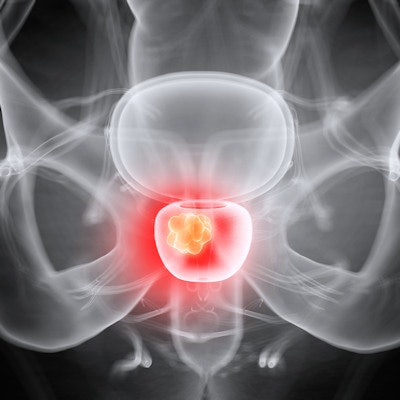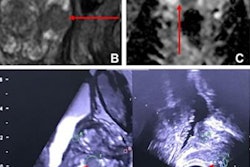
TORONTO - Interpretation of multiparametric MRI (mpMRI) data for diagnosing prostate cancer can vary among radiologists, according to research presented June 5 at the International Society for Magnetic Resonance in Medicine (ISMRM) meeting.
Yet despite a variation of between 39% to 66%, the average positive predictive value (PPV) percentage is 55% -- more than prior research has suggested, a group led by presenter Zachary Franks, DO, of Stanford University found.
"The positive predictive value of radiologists for detection of prostate cancer is higher than outside reports," the team wrote.
Radiologists use the Prostate Imaging Reporting and Data System (PI-RADS) guidelines to mitigate variations in the acquisition, interpretation, and reporting of mpMRI data for prostate cancer diagnosis. Multiparametric MRI of the prostate -- in addition to MRI-targeted biopsy -- helps radiologists identify more clinically significant prostate cancers and fewer clinically insignificant ones compared with standard systematic biopsy alone, the group noted. But PPVs for detection of clinically significant prostate disease ranges, from 35% for PI-RADS scores of 3 to 5 and 49% for PIRADS 4 to 5, according to Franks and colleagues.
"While some studies have shown that experience and number of prostate MR exams interpreted by the individual radiologist contributes to improving PPV, others have shown no improvement in performance with increasing case number," the team wrote.
Franks' group sought to assess the PPVs of individual radiologists interpreting mpMRI data for prostate cancer and to explore factors that could contribute to the variability in prostate MR interpretation, comparing mpMRI results to those from targeted MR/US-guided fusion biopsies. They conducted a study that included 1,544 prostate lesions identified on mpMRI based on a PI-RADS score equal to or greater than 3 from 1,028 patients who underwent MRI ultrasound fusion targeted biopsy between 2017 and 2022 (two urologists performed the biopsies and sent tissue samples for histopathologic evaluation).
Fourteen radiologists with a range of prostate MRI interpretation experience read the exams. The investigators tracked prostate volume, prostate-specific antigen (PSA), PSA density, lesion location, and PIRADS score.
They found that factors that influenced PPVs among radiologists included PSA density, lesion location, and prostate volume; PPVs ranged from 39% to 66% with an average of 55%. They also reported that prostate gland volume, PSA, and PI-RADS category were all statistically significant predictors of PPV (p < 0.005).
| Overall PPV of radiologists' MRI interpretation based on PI-RADS category | |
| PI-RADS category | PPV |
| 3 (presence of clinically significant cancer is uncertain) | 31% |
| 4 (clinically significant cancer likely) | 55% |
| 5 (clinically significant cancer highly likely) | 79% |
The research demonstrates that variations occur, but may not negatively affect patient care, according to the authors.
"Although a wide range of variability exists among our radiologist PPVs in detection of prostate cancer (Gleason 3+3 or higher), the average of 55% is higher than prior multi-institutional averages of 35% for all PIRADS 3-5 lesions," they concluded.




.fFmgij6Hin.png?auto=compress%2Cformat&fit=crop&h=100&q=70&w=100)




.fFmgij6Hin.png?auto=compress%2Cformat&fit=crop&h=167&q=70&w=250)











